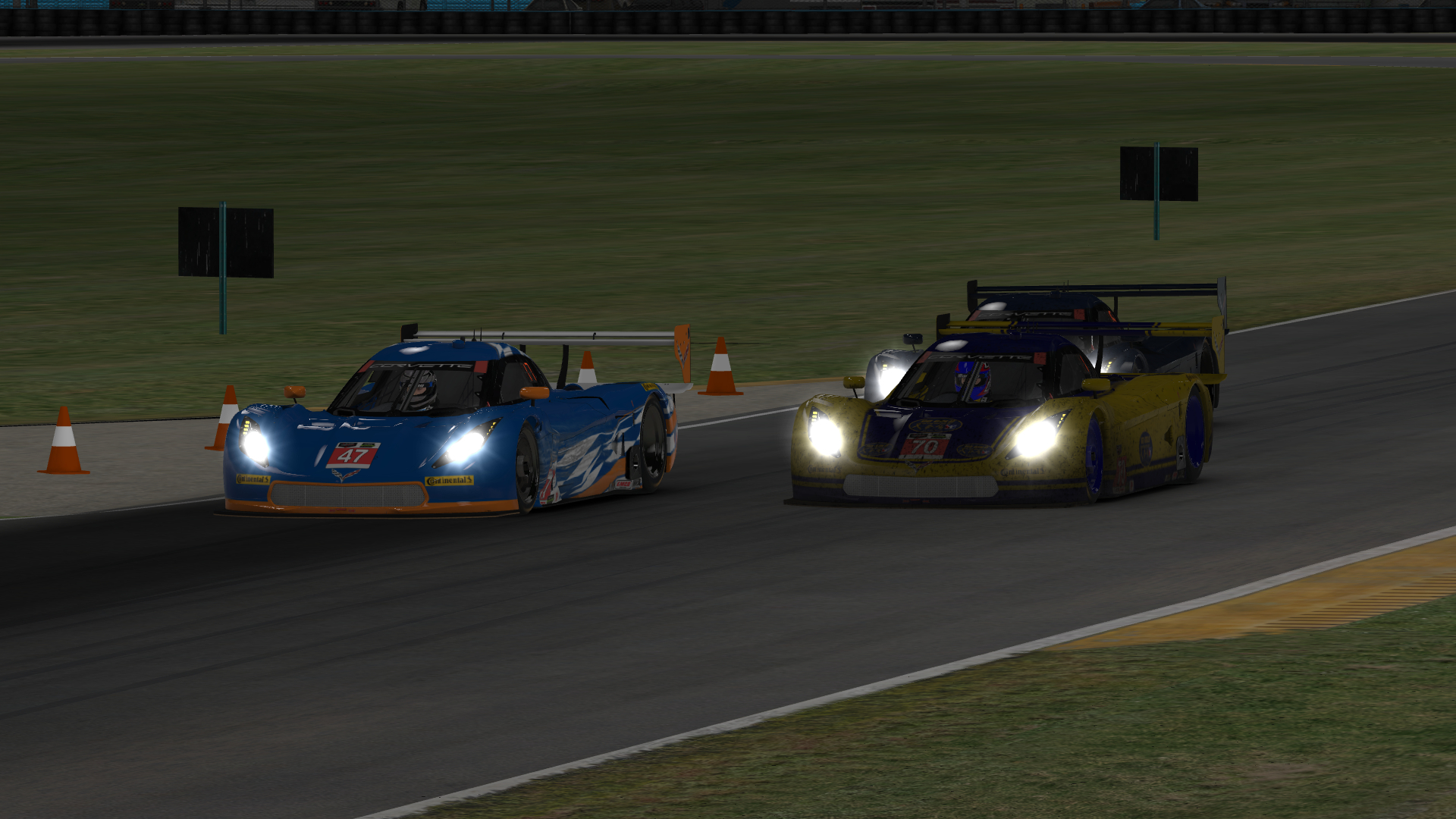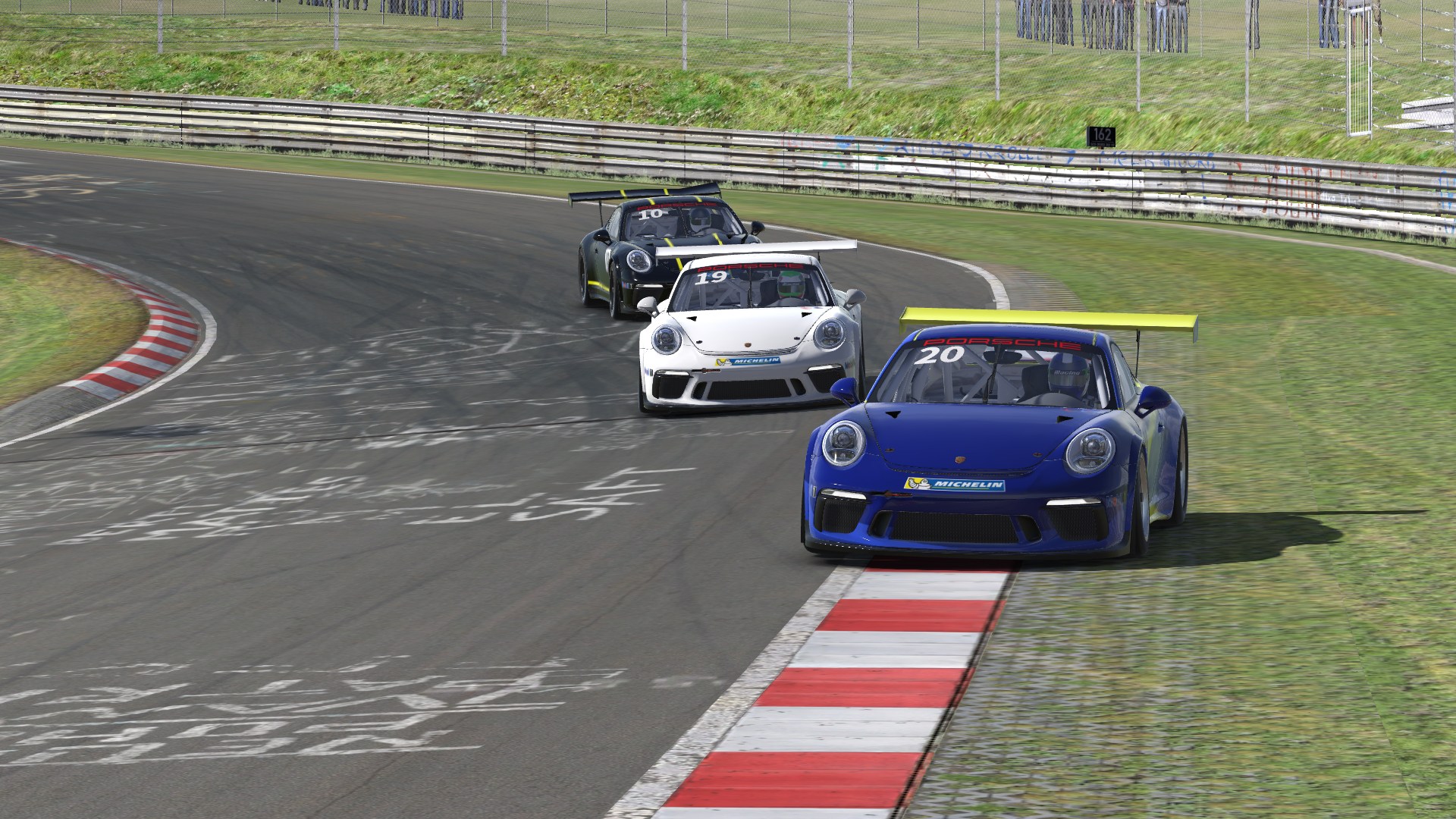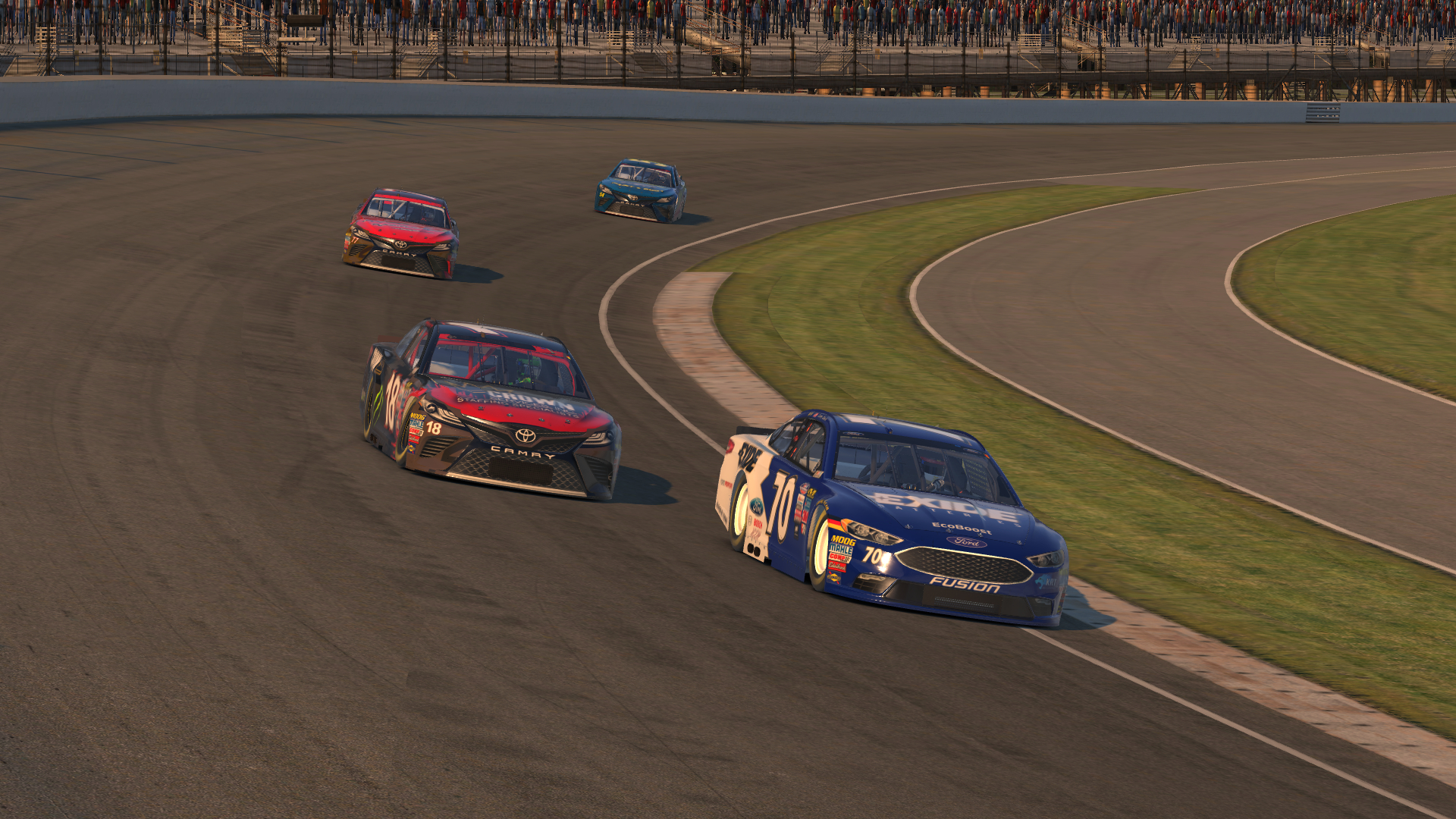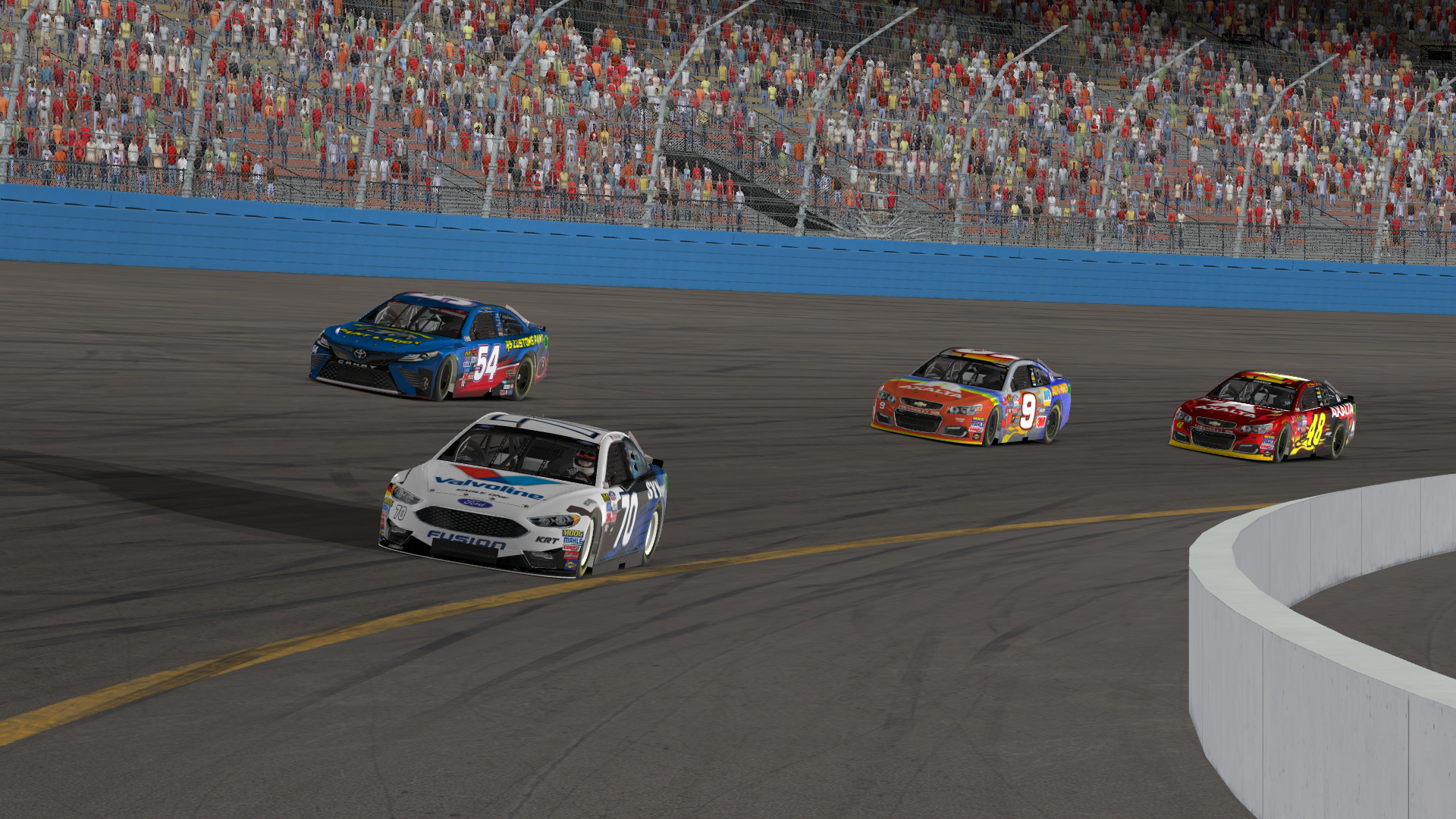If you ever listen to team communications during a race, you’re likely to hear one thing no matter which driver you tune to: “this car is driving awful!”
Few things on the track draw more ire from drivers than a bad-handling car, and rightfully so. A successful setup can help make the most of out a race, while a bad one can cause an opportunity to slip away.
Of course, setup preferences are as different as driving styles. Each driver has certain tendencies and irritations with those changes under the hood, and during a race where tire wear, ambient weather, and track conditions change, the perfect setup is always a moving target.
You could fill an entire blog with thoughts about setup adjustments, but in this post, I want to look at how driving styles affect setups and vice versa.
To Each His Own
So far in this series, I’ve looked at driving styles in the context of inputs and downforce, gathering some illuminating insights by comparing my own style with my teammates Karl Modig and Dean Moll, whose styles are worlds apart from each other.
Given those differences, it’s probably no surprise that they have different setup preferences as well, especially when it comes to downforce.
Dean’s style suited toward high-downforce cars also tends to demand a higher-downforce setup, which helps him brake even later and keep cornering speeds even higher. That makes his job easier in racing situations.
“My preference is to run more downforce on the car,” he said. “I find the extra stability in traffic is beneficial, which allows me to focus on racing versus fighting the car.”

For Dean, the stability provided by extra downforce proves useful in traffic.
Because Karl’s style emphasizes slowing down mid-corner to get the car to rotate and getting back to the throttle sooner, extra downforce doesn’t help him much. In fact, he said he prefers a low-downforce setup because it gives him an edge in a different area: top speed. After all, passing in a straight line is much easier than in a corner.
There’s no one right answer to which setup is correct other than whatever is fastest, and that varies from driver to driver. For example, with Karl’s style, having higher tire pressures can help with his mid-corner rotation.
On the other hand, I can’t stand my tire pressures to be too high. By now, I’m sure Karl is sick of me complaining about “driving on basketballs” — the best comparison I can make to having overinflated tires. For me, it’s a matter of stability, or the lack thereof.
Instead of raising the tire pressures, one of my go-to adjustments to help the car turn is increasing the front toe-in. This especially helps with quick changes of direction, like the high-speed left-right Schumacher S at the Nurburgring. Although too big of a change can also compromise the stability of the car, in small amounts, I find it to be an effective adjustment.
When Adjustments Aren’t an Option
Not all cars are created equal in terms of available setup adjustments. While Indy cars and F1 cars offer nearly every imaginable adjustment, many of the lower-level cars only allow changing tire pressures, cambers, and a few other settings. These cars with a more fixed setup often require adapting your driving to the setup instead of the other way around.
One such car is the Porsche 911 GT3 Cup car, which was designed by Porsche to have limited adjustability to better highlight driver talent behind the wheel. Both this car and its predecessor on iRacing, the Ruf C-Spec, notably have a bit of oversteer on corner exit. Without traction control, adjustable dampers, or differential settings to dial this out, it’s simply a characteristic you have to deal with.

With no traction control, exit oversteer tends to be a common characteristic of the Porsche 911 GT3 Cup car.
This exit oversteer seems to be even more magnified with my slow-in, fast-out driving style, which means I have to be more careful with my throttle application in these cars. For comparison, in a car like the Mercedes AMG GT3, I usually run a high traction control setting and often tune the differential to shift understeer to the corner exit.
Perhaps the best example of adapting your driving style to the setup comes when driving fixed-setup oval cars. These series are hugely popular on iRacing because they don’t require much setup knowledge or time spent under the virtual hood.
A Fixed Setup Fallacy
One common misconception is that fixed setups level the playing field among drivers. In reality, certain setups suit certain driving styles better, and I have first-hand experience with that while racing in the fixed-setup Power Series.
When we raced at Indianapolis a year ago this week, I had a decent enough run to clinch the championship but certainly wasn’t a contender to win. However, when we returned there just a few weeks later during the summer, it was a different story.
While the setup was the same, the weather and track conditions made the cars much tighter around Indy’s flat corners, which are tough enough to negotiate in a heavy stock car as is. Even I — an early braker in the first place — found myself moving by braking points back so I didn’t push straight past my apexes. The cars were undeniably tight, but I adjusted to it and ended up getting the race win.

While my competitors fought a tight setup at Indy, I adapted to it and won the race.
While the setup and my tolerance for its tightness benefitted me on that day, fixed setups also worked against me several times over the years. I always tended to struggle when the car felt floaty through the center and exit of a turn, whether it was due to an overly loose setup or overly high tire pressures.
In general, I was and am a fan of fixed-setup oval series, but I realize that just because the setup is the same for all drivers, it doesn’t mean that no one will have an advantage. I like to think that good oval drivers can adapt their style to any setup, even if it’s not their preference.
What a Driver Wants
So what do drivers prefer in a setup? While different drivers favor certain adjustments over others, I suspect they almost all agree on the ultimate outcome: having a car that will effectively rotate in the center of the corner.
This is true regardless of driving style, whether you’re Dean looking to keep your cornering speeds high or Karl looking to get the car slowed and turned early. In either case, good rotation maximizes the speed you can carry, and in essence, it means the car is working for you rather than making you fight it through the turns.
I’ve seen the benefits of this first-hand. With three races to go in my first championship-winning season in the Power Series, we visited the newly repaved and reconfigured Phoenix International Raceway for the first time.
Since no one had raced there yet, it was a huge wildcard in the championship fight. And somehow, I managed to drive that track and setup just right so that it perfectly rotated the center of the corner, especially in turns 1 and 2. I managed to win that race by almost 9 seconds, and in a season that was ultimately decided by a tiebreaker, those points gained at Phoenix were vital.

Rotating the center of the corner at Phoenix helped me win my first Power Series championship.
So in this race, how did I manage to make the car do something that most other drivers couldn’t? Am I a better driver than them? That’s doubtful, as in plenty of other races in that series, they outmatched me or we were at least nearly equal on pace.
More likely, it came down to differences in driving styles. I always found myself lifting earlier than most other drivers entering turn 1 at Phoenix, which could’ve been just what that setup called for.
In several return trips to Phoenix, I was never quite able to find the same successful recipe to rotate the center. That just goes to show how tough it is to make driving styles and setups mesh together perfectly, the inability to do so usually resulting in a frustrated driver.
And what’s a race without the sounds of cars revving, crews working, and drivers complaining?